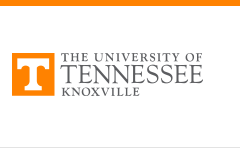
Doctoral Dissertations
Date of Award
8-2013
Degree Type
Dissertation
Degree Name
Doctor of Philosophy
Major
Aerospace Engineering
Major Professor
Gary Flandro
Committee Members
Trevor Moeller, John Steinhoff, Kivank Ekici, Monty Smith
Abstract
High power-density devices such as liquid rocket engines and gas turbine power plants often experience combustion instabilities, when the fluid flow ceases to be smooth and begins oscillating. These flow oscillations often have pressure oscillations with negative consequences.
Much work has been done in recent years to extend the theories describing these combustion instabilities to cover high-amplitude waves, where the behavior ceases to be linear and energy cascades through the natural modes of the system. However, in cylindrical geometries, a tension exists between the usual model (that energy cascades through natural modes) and the observed phenomena (which usually contains integer harmonics of the primary frequency), as the natural frequencies of circular waves are not harmonics of each other.
One old theory describes strong cylindrical waves, predicting that the natural mode shapes will change in the presence of strong nonlinearity. Several recent theories use an assumption that the natural modes do not change in strong waves, and that the nonlinear solution can be expressed in terms of these unchanged natural modes. All the theories shared a lack of strong, direct experimental validation for strong cylindrical waves.
An experiment was located which exhibits the properties under consideration, and that experiment was modeled with four different theories. The theories successfully modeled the major behavior of the experiment, with varying degrees of quantitative agreement. Three of the theories did not make the assumption that the linear mode shapes do not change, and were used to evaluate the quality of that assumption.
Further, the three theories that permitted it all showed a spatially-distributed, time-independent pressure shift: a DC offset with a radial dependence. This valley-shaped time-independent pressure feature was not found in the literature, though it would have important consequences to engine design and operation if it is real.
Recommended Citation
Wilson, Andrew W., "On Strong Pressure Waves in Cylinders. " PhD diss., University of Tennessee, 2013.
https://trace.tennessee.edu/utk_graddiss/2497

